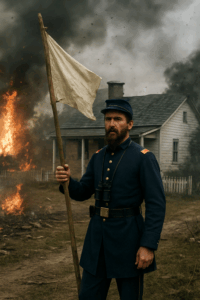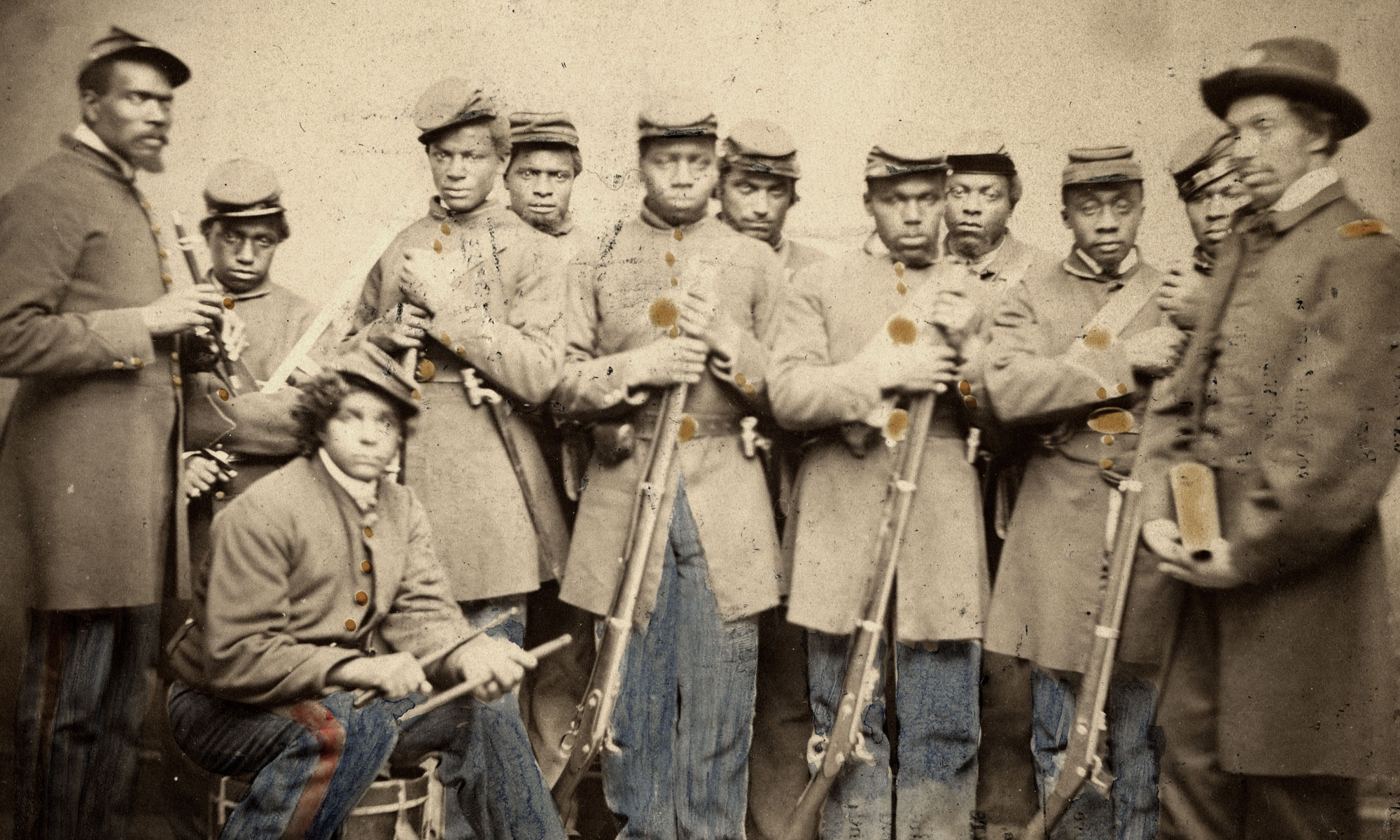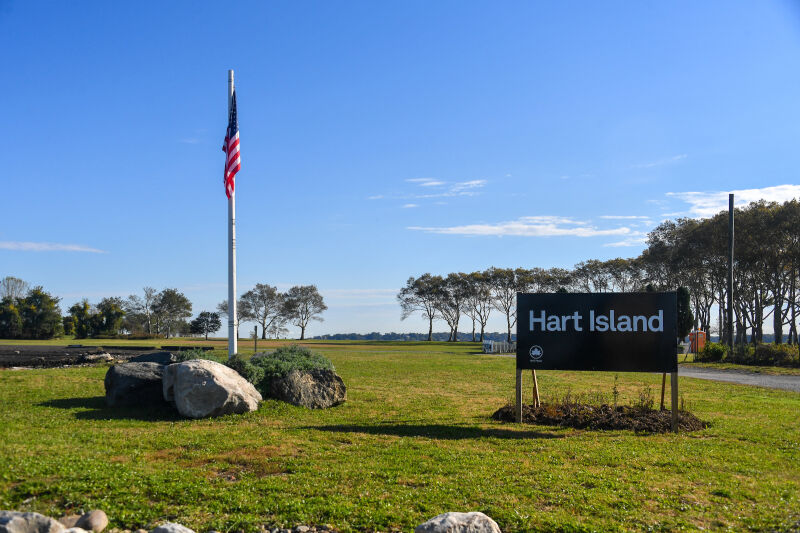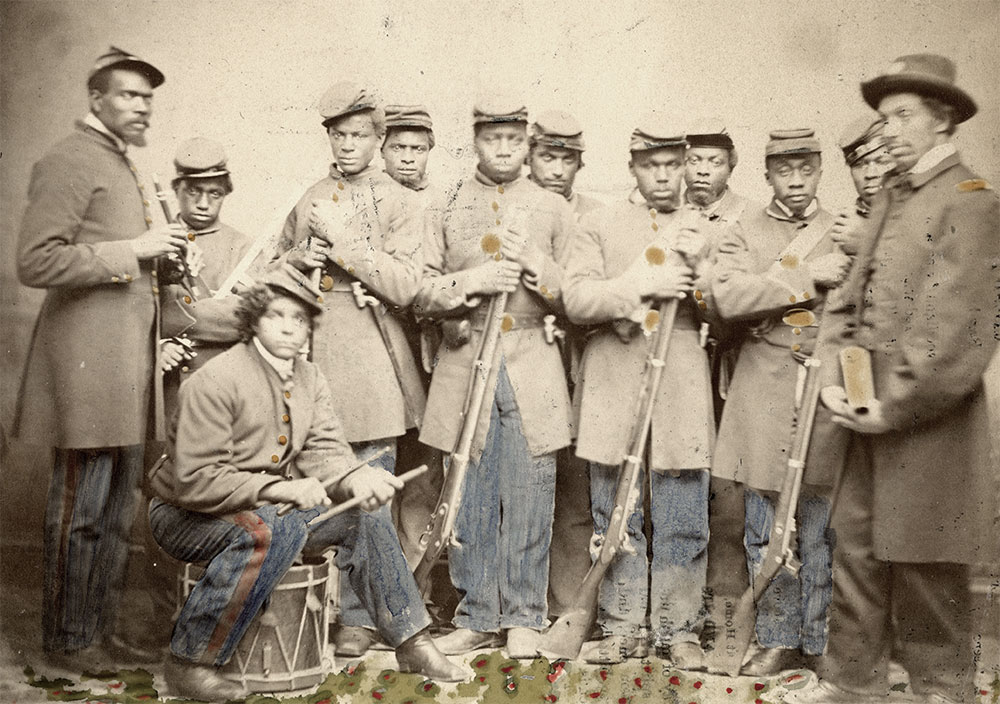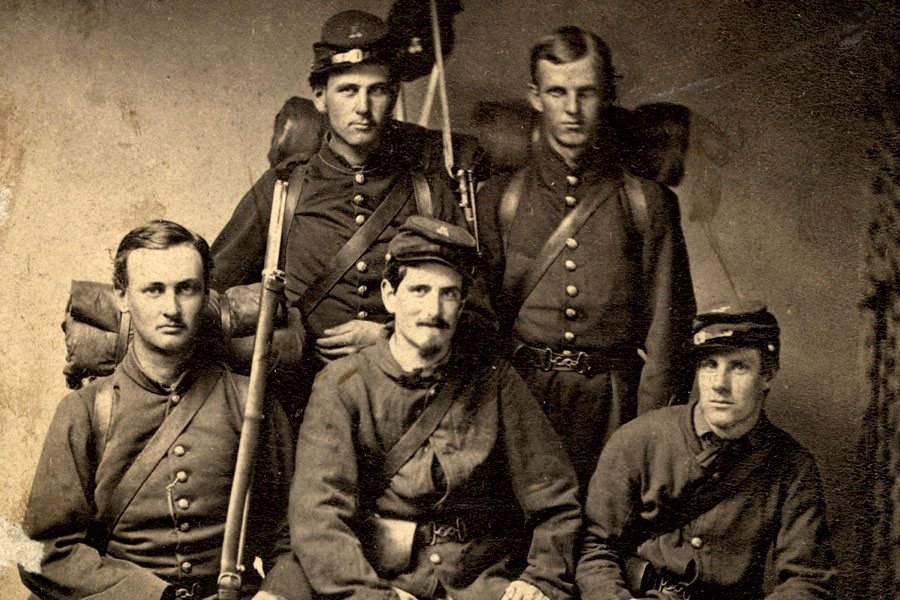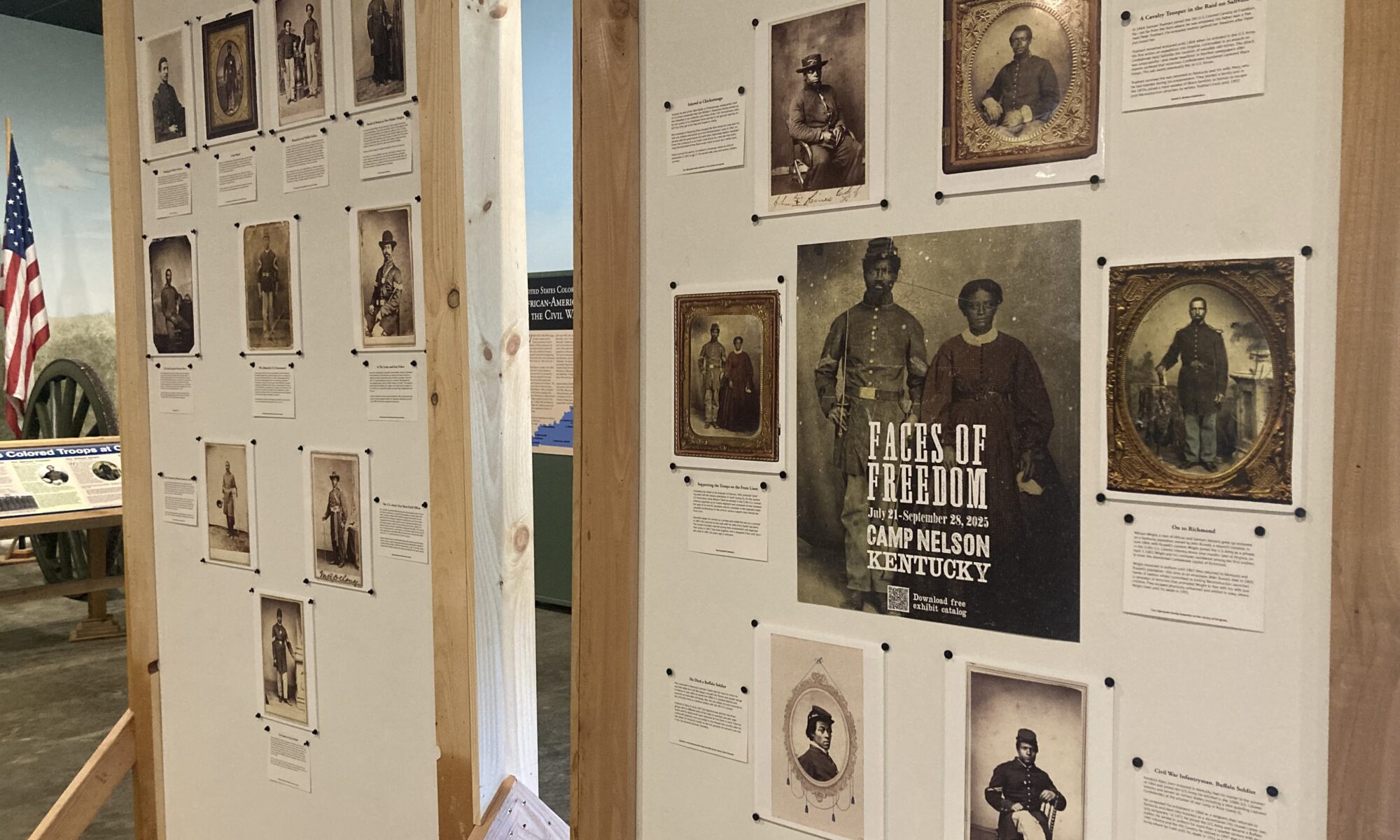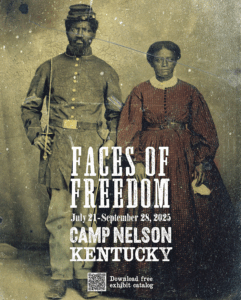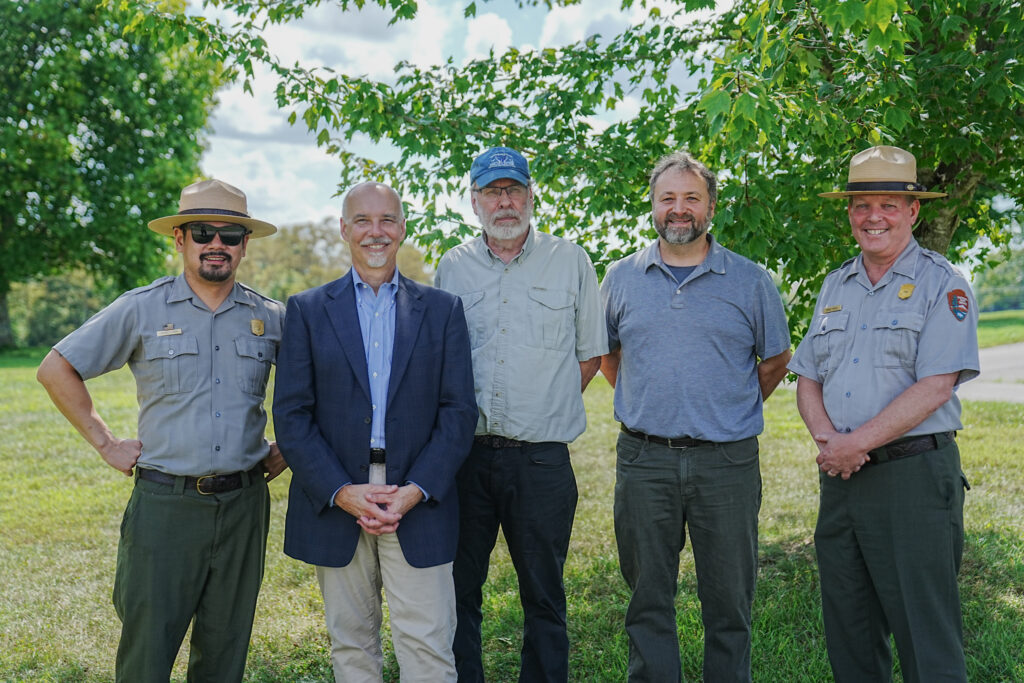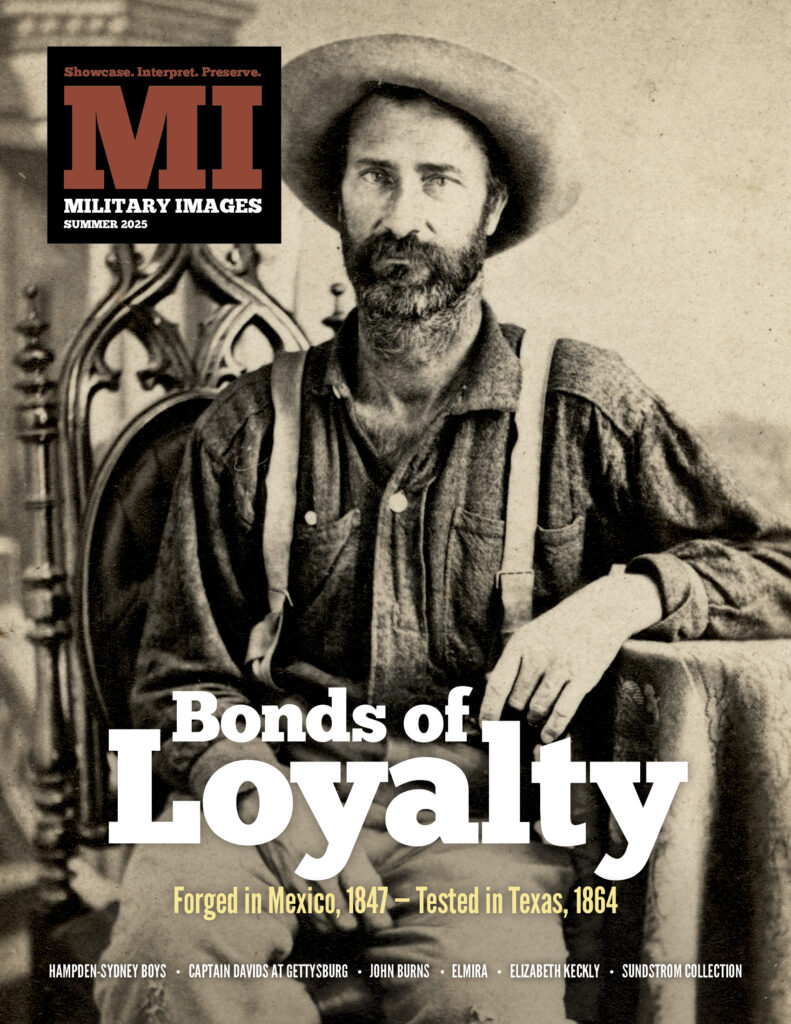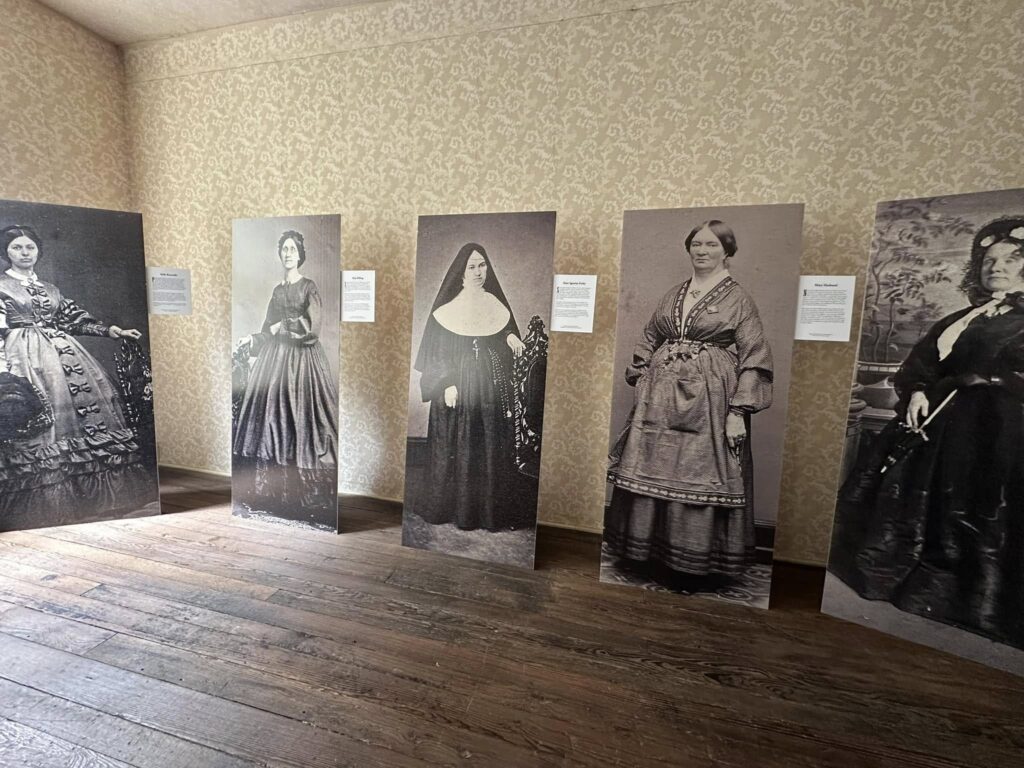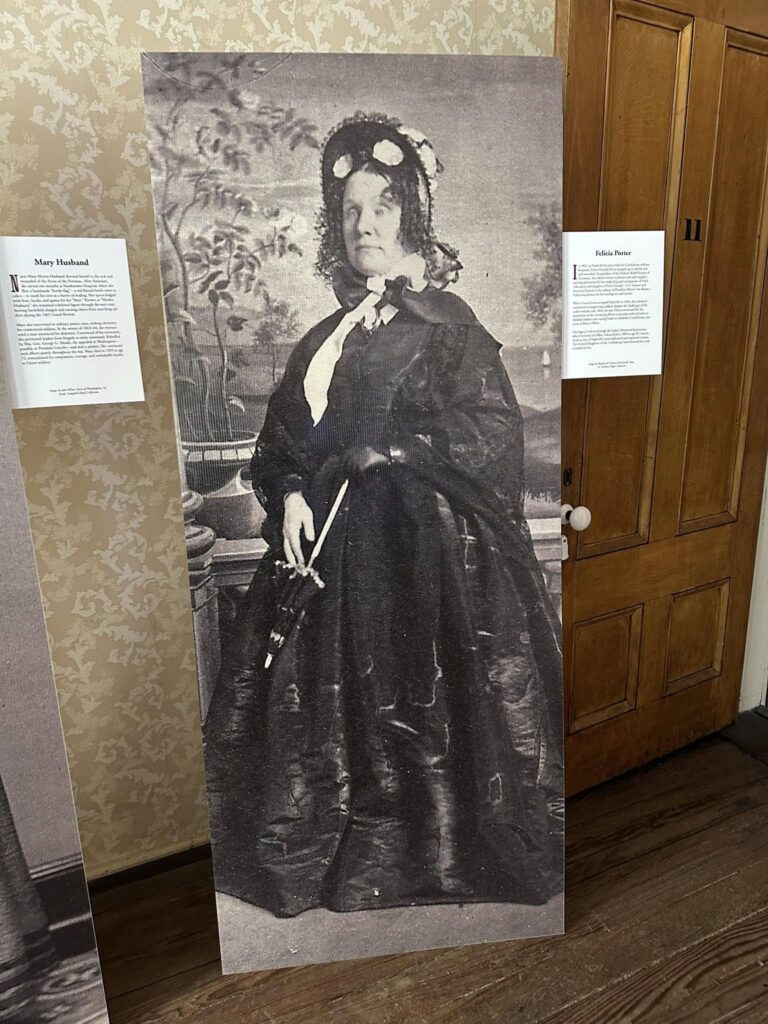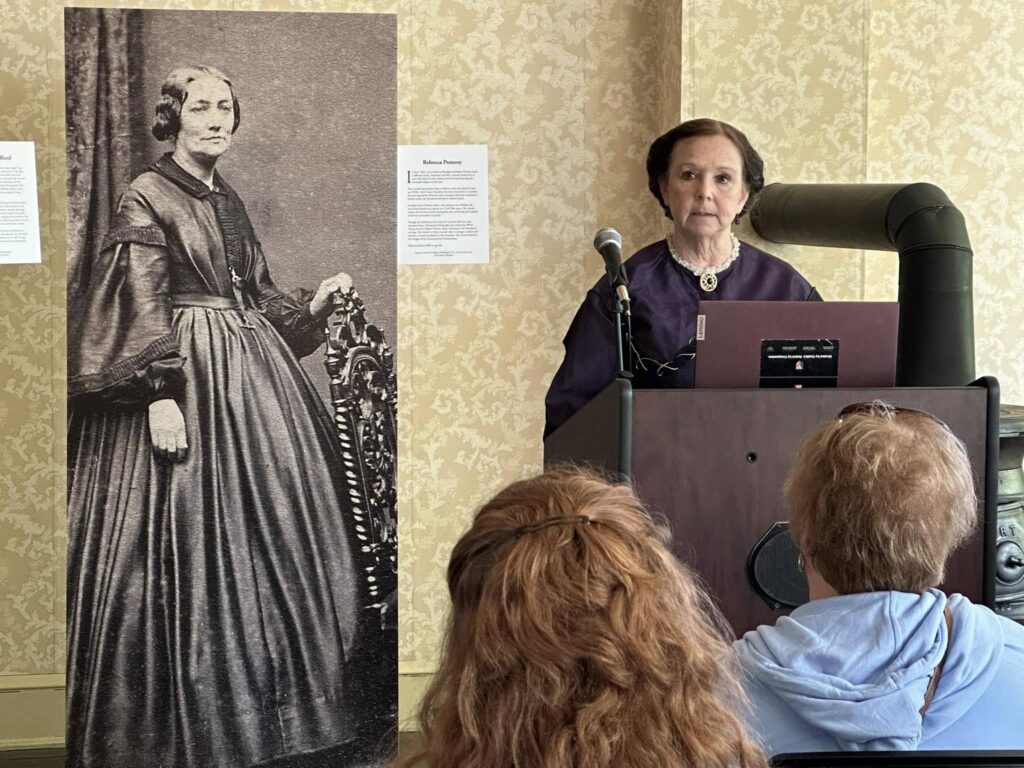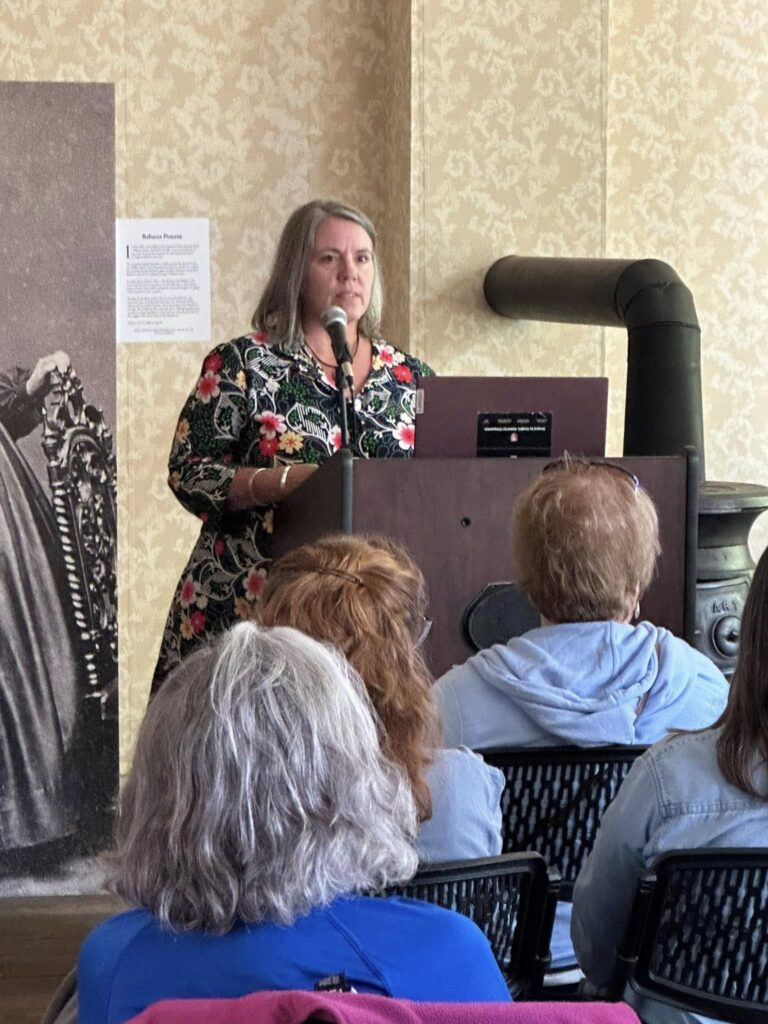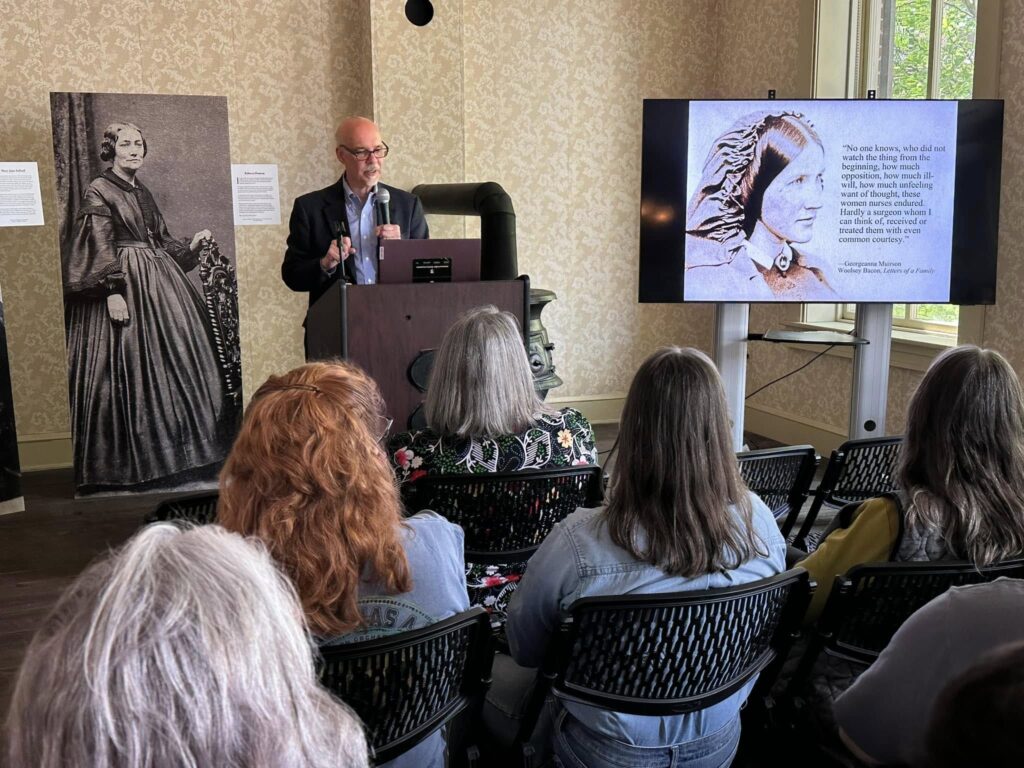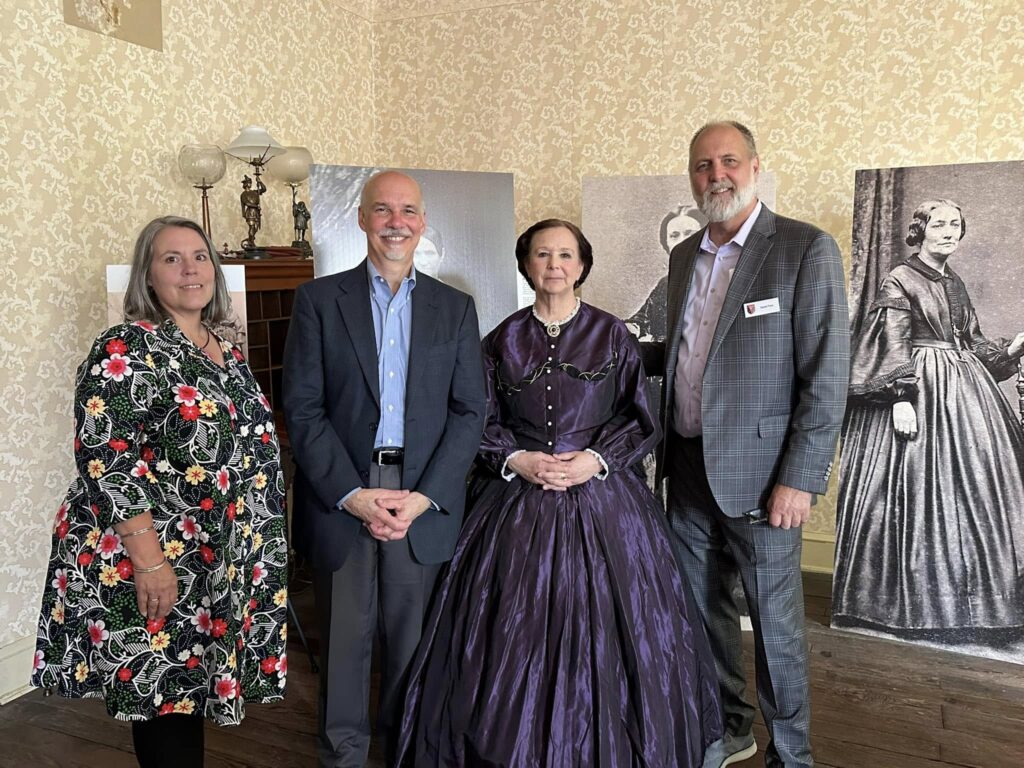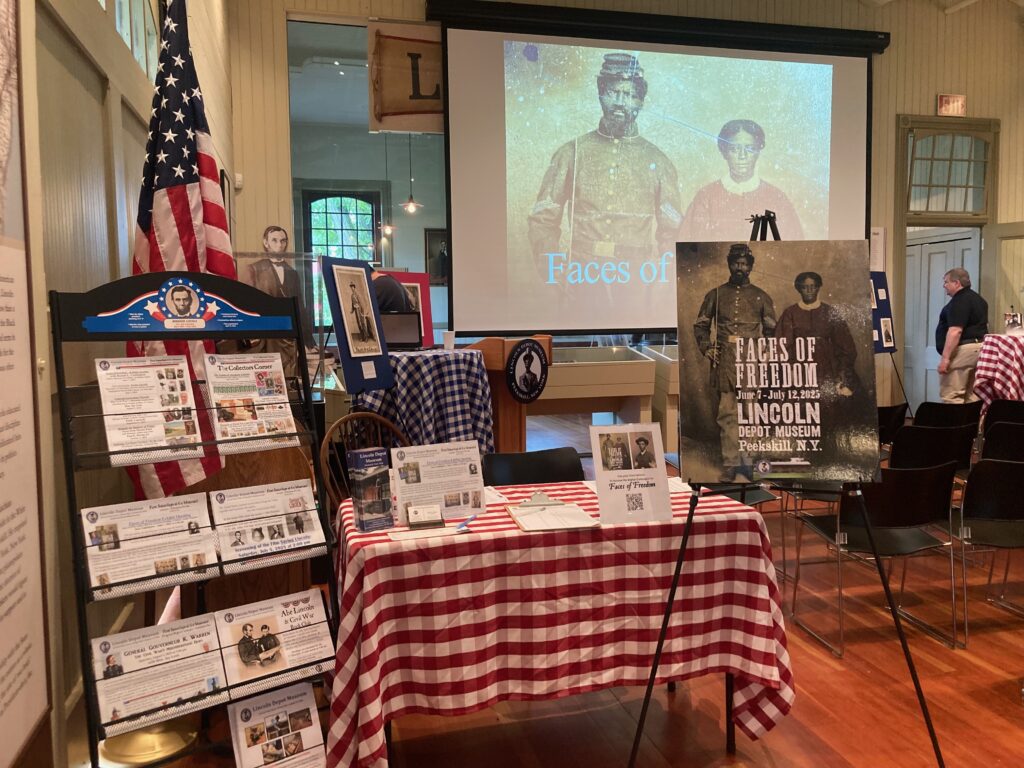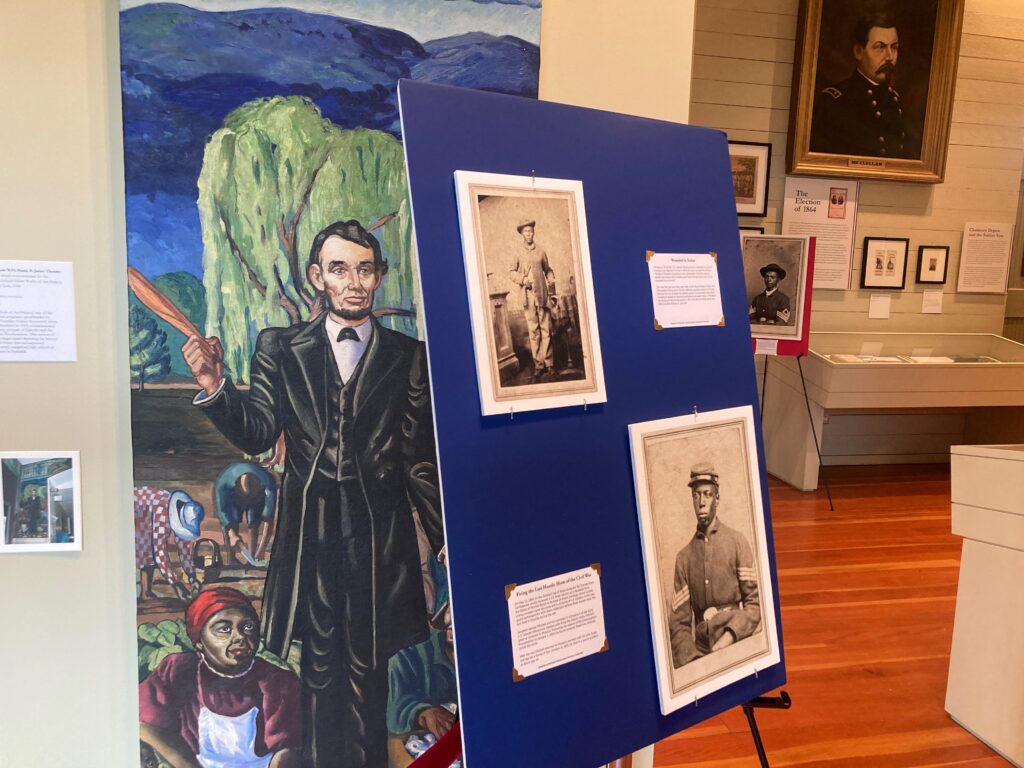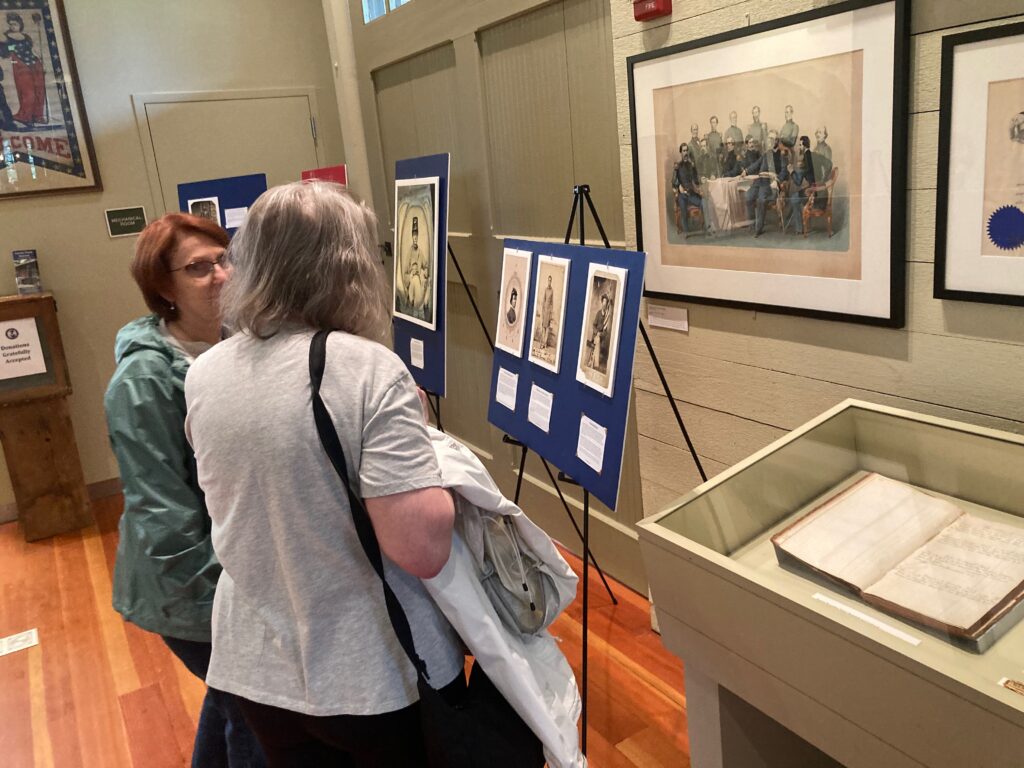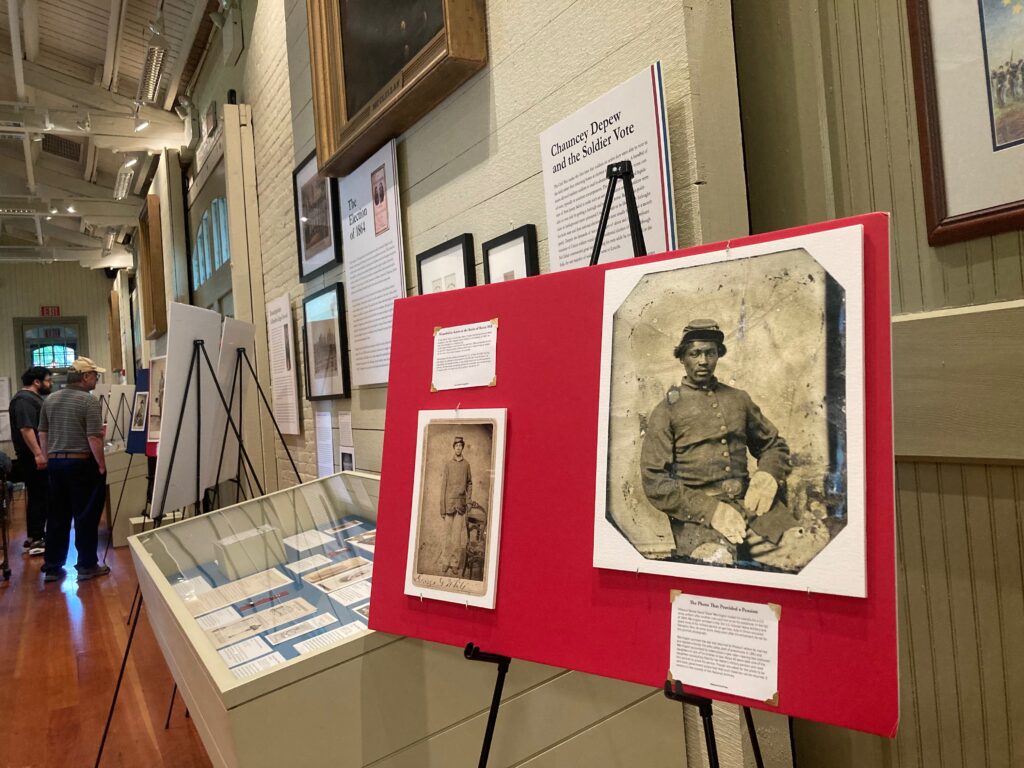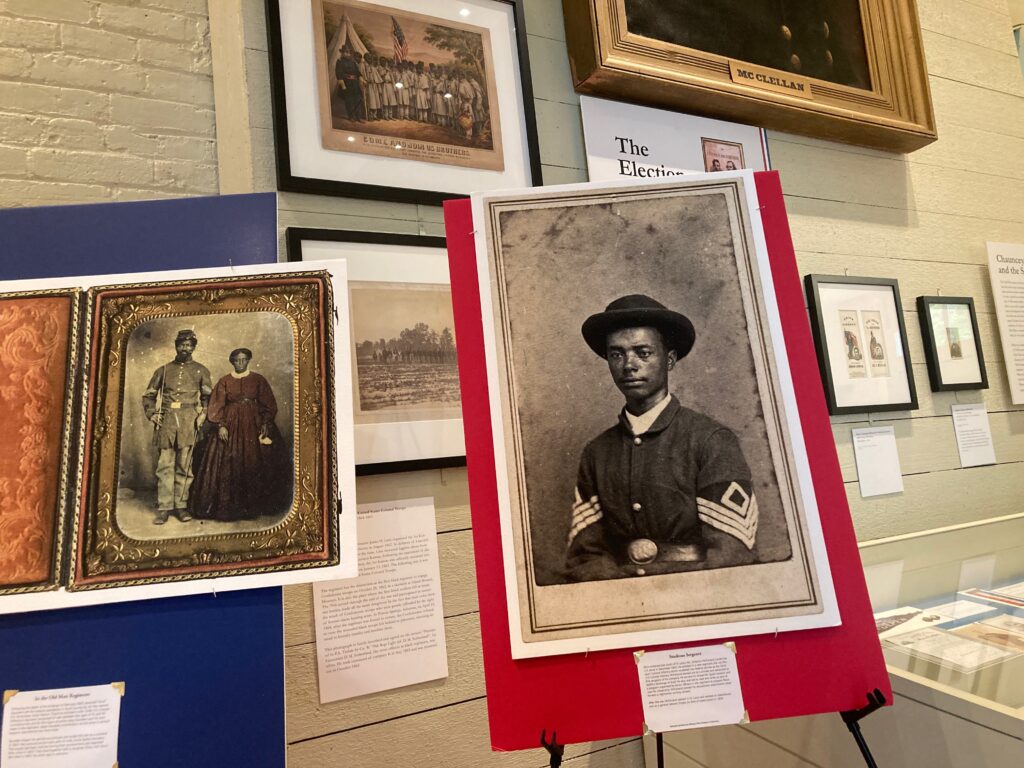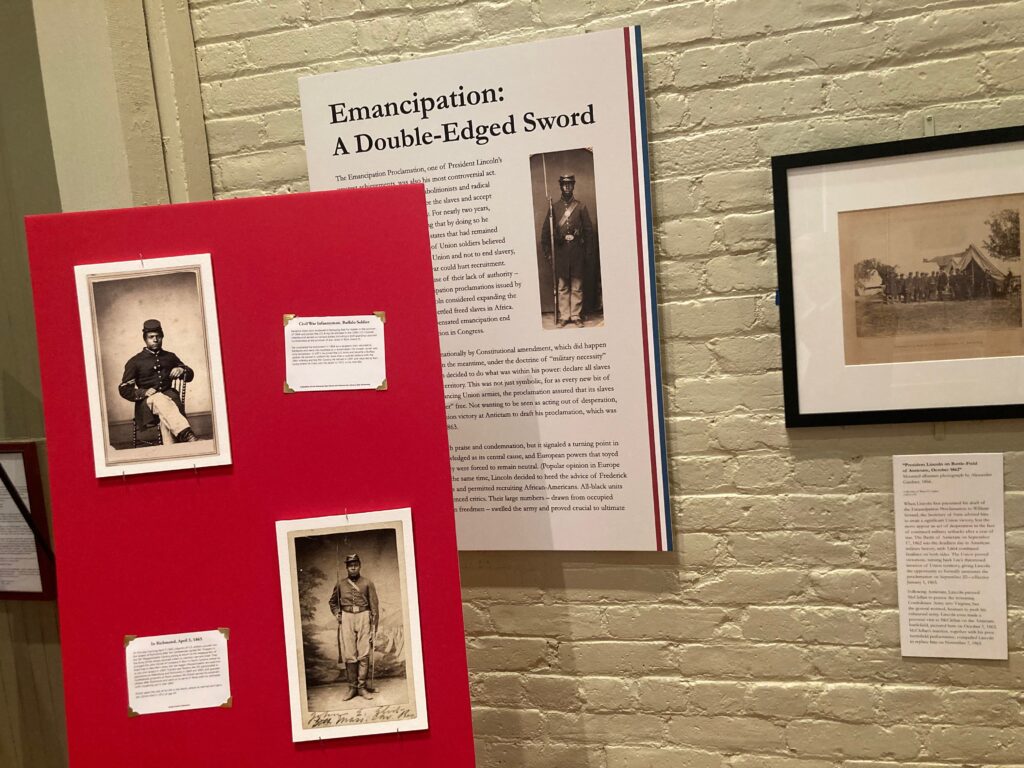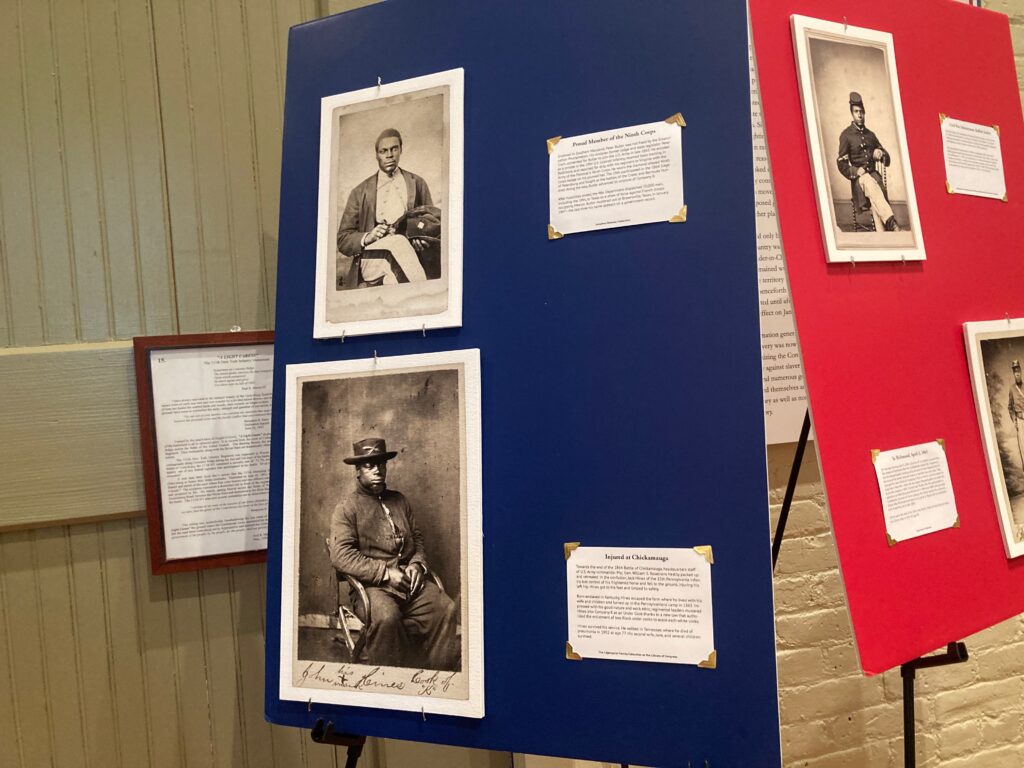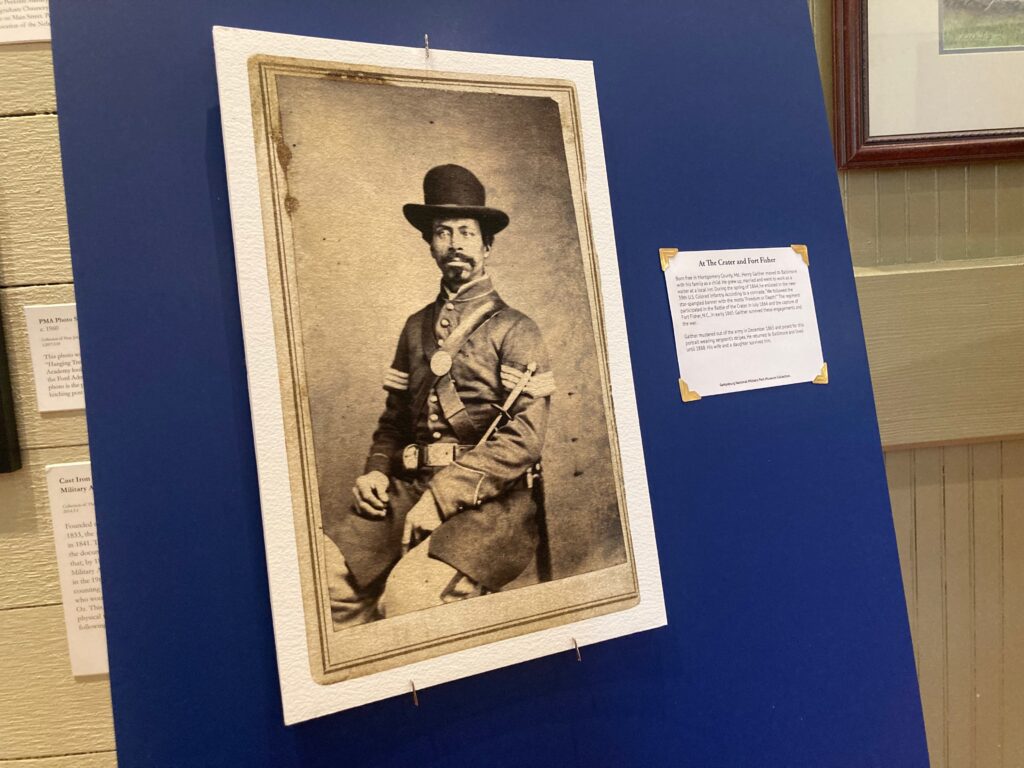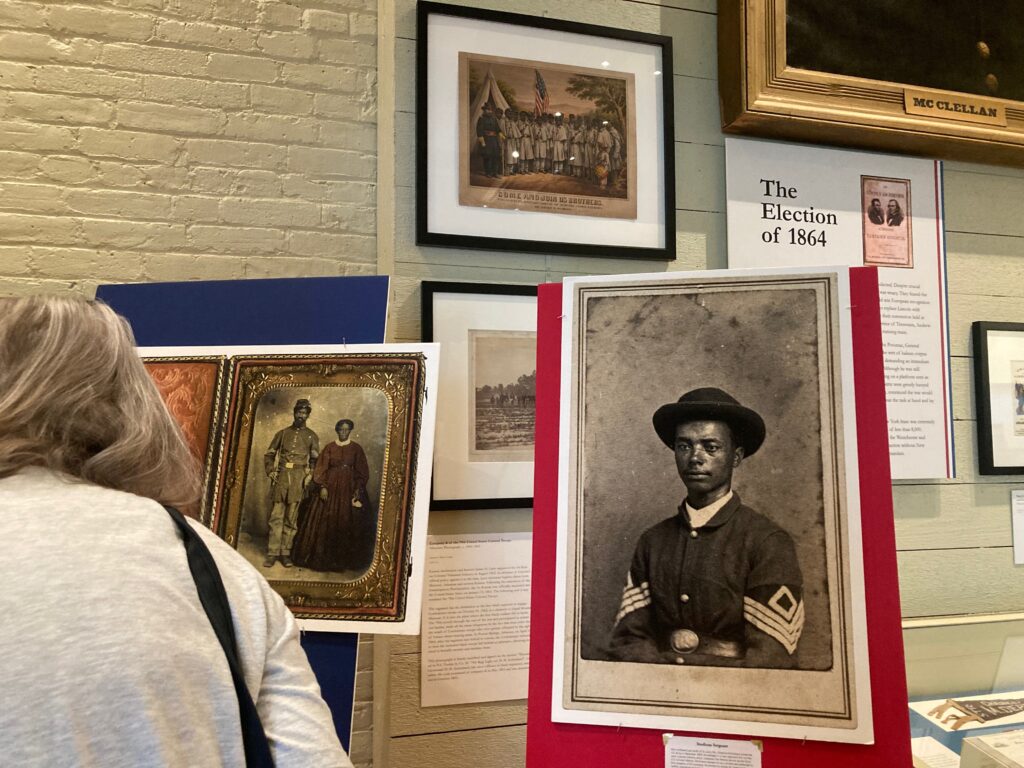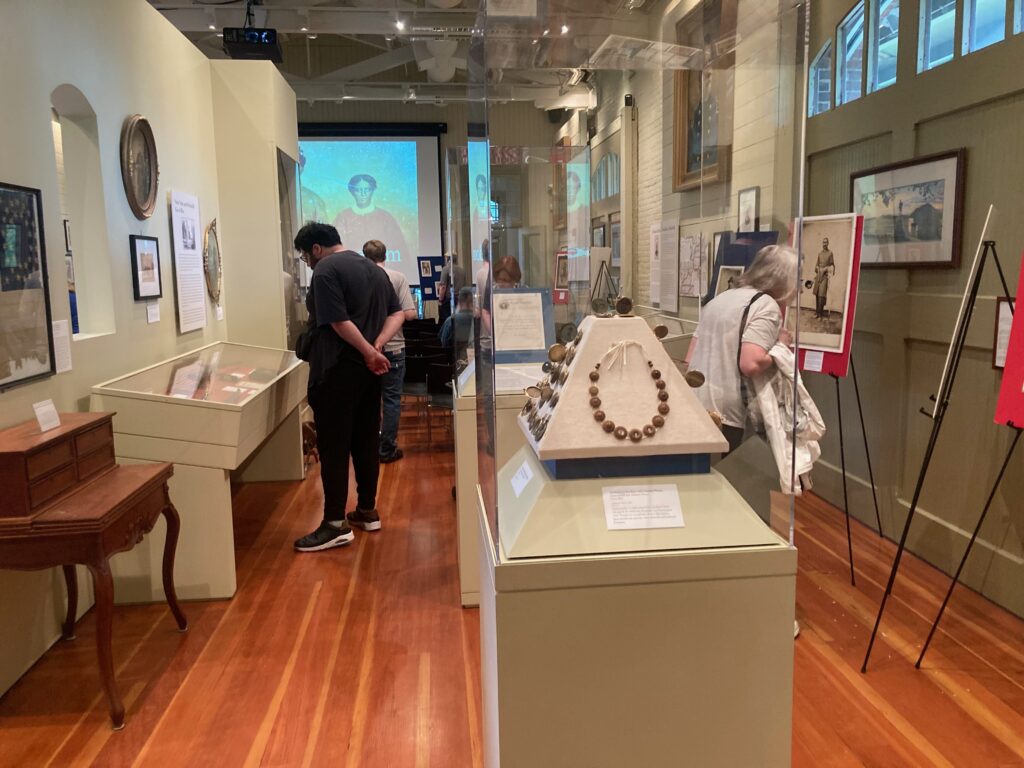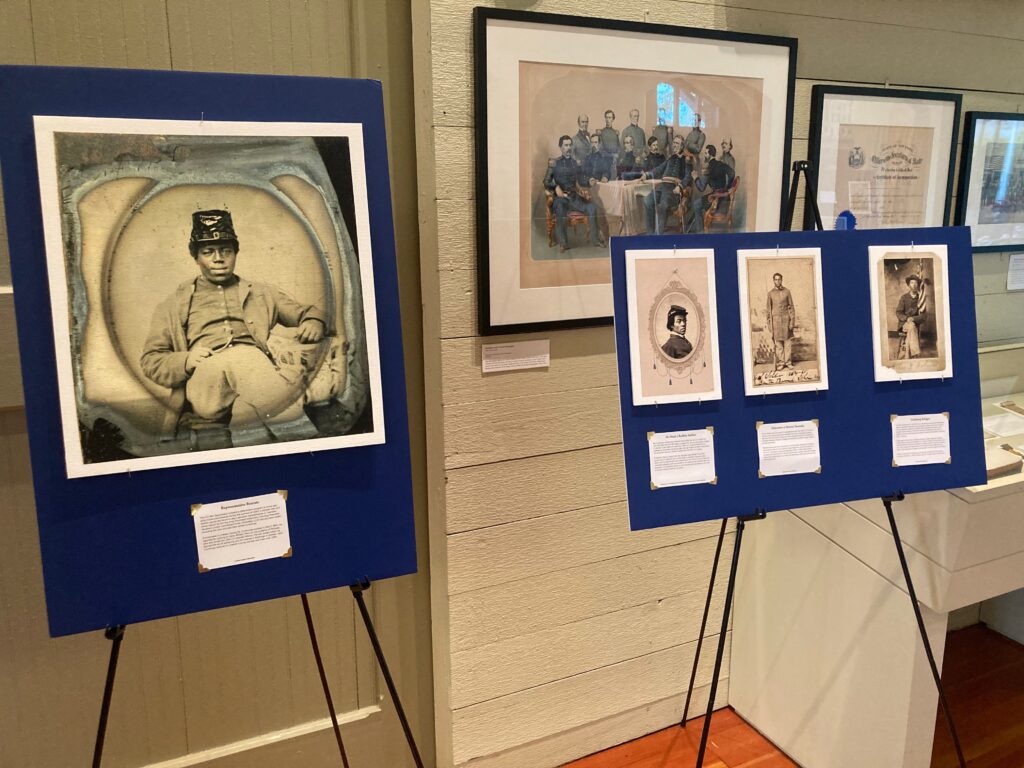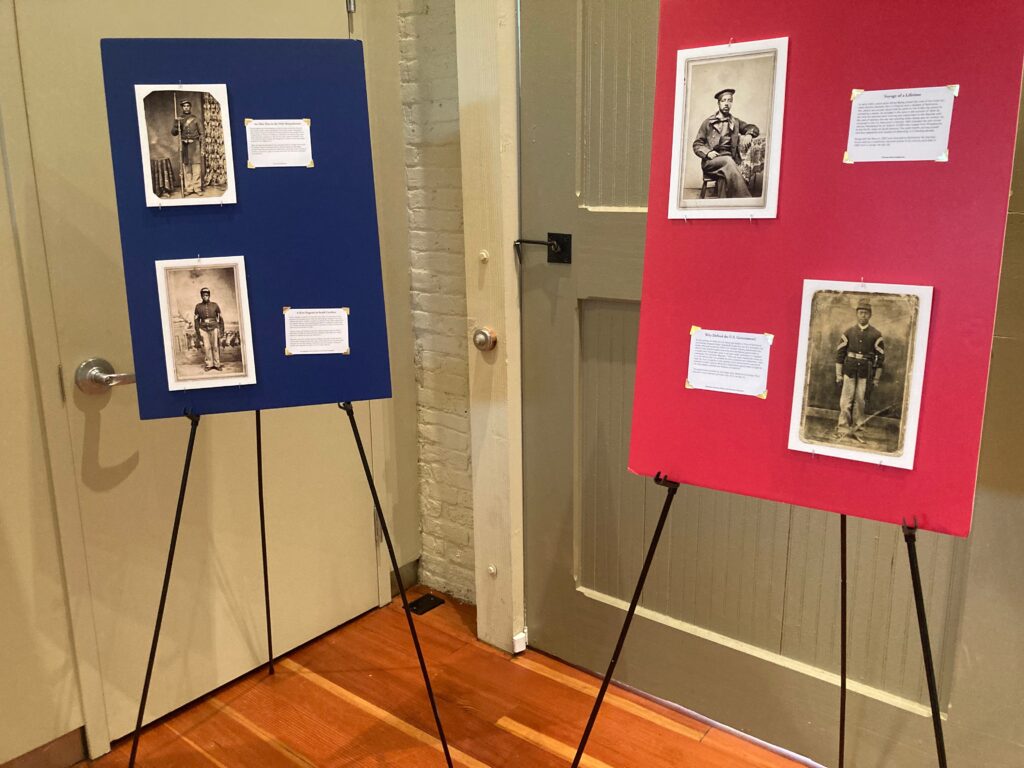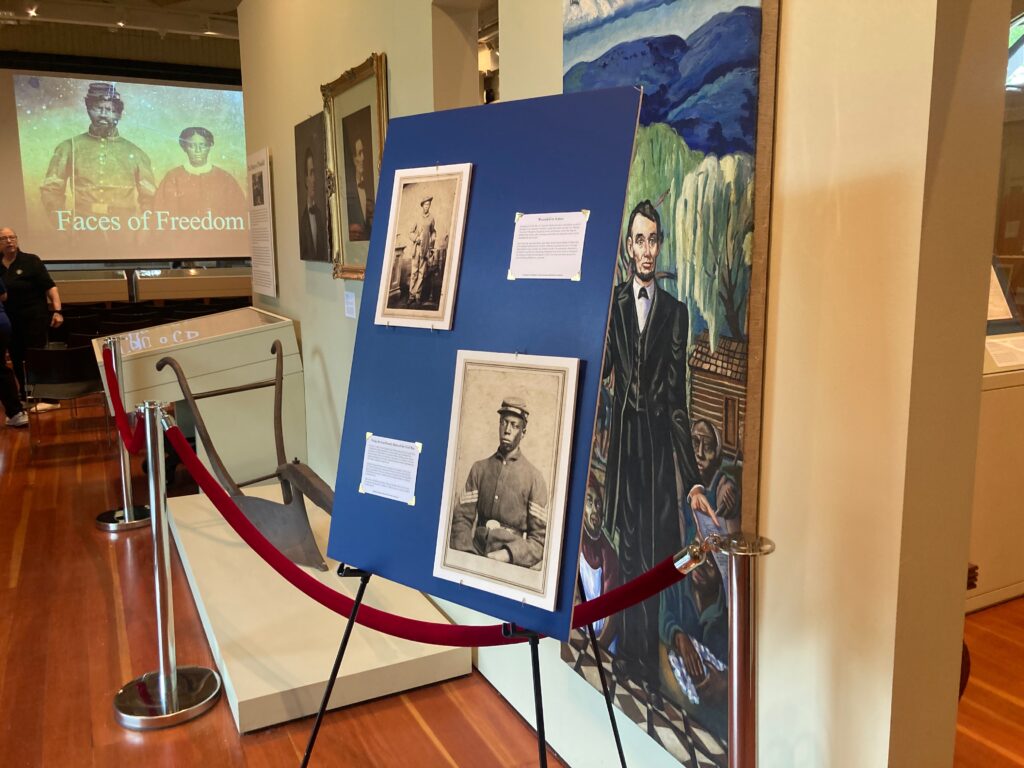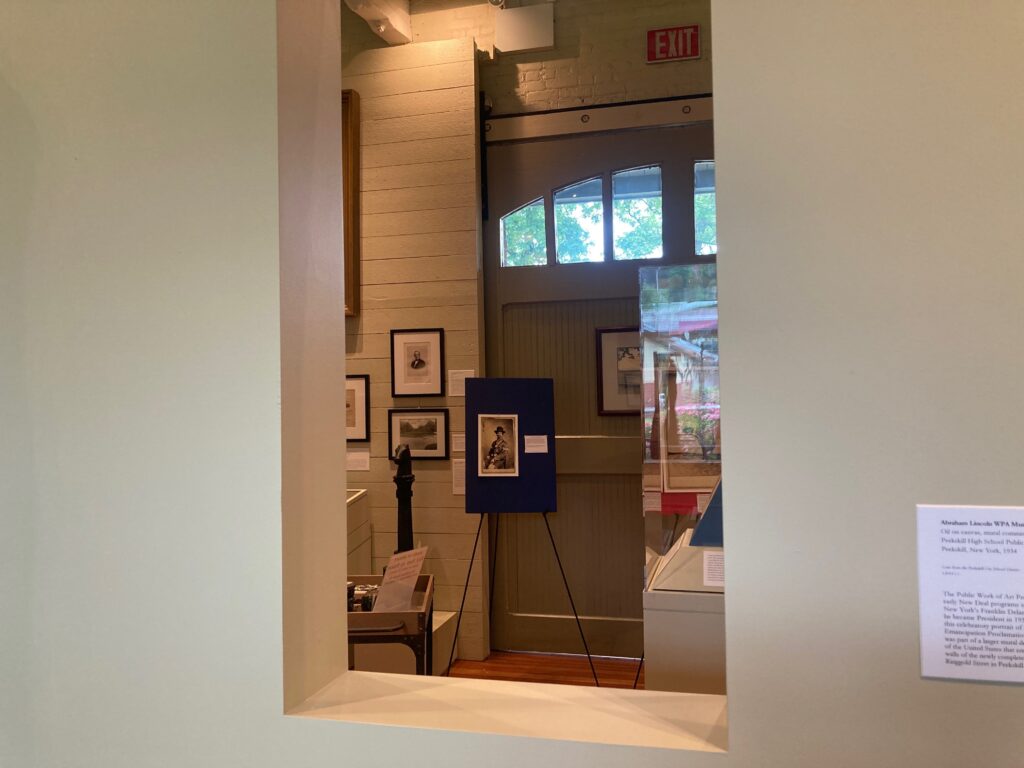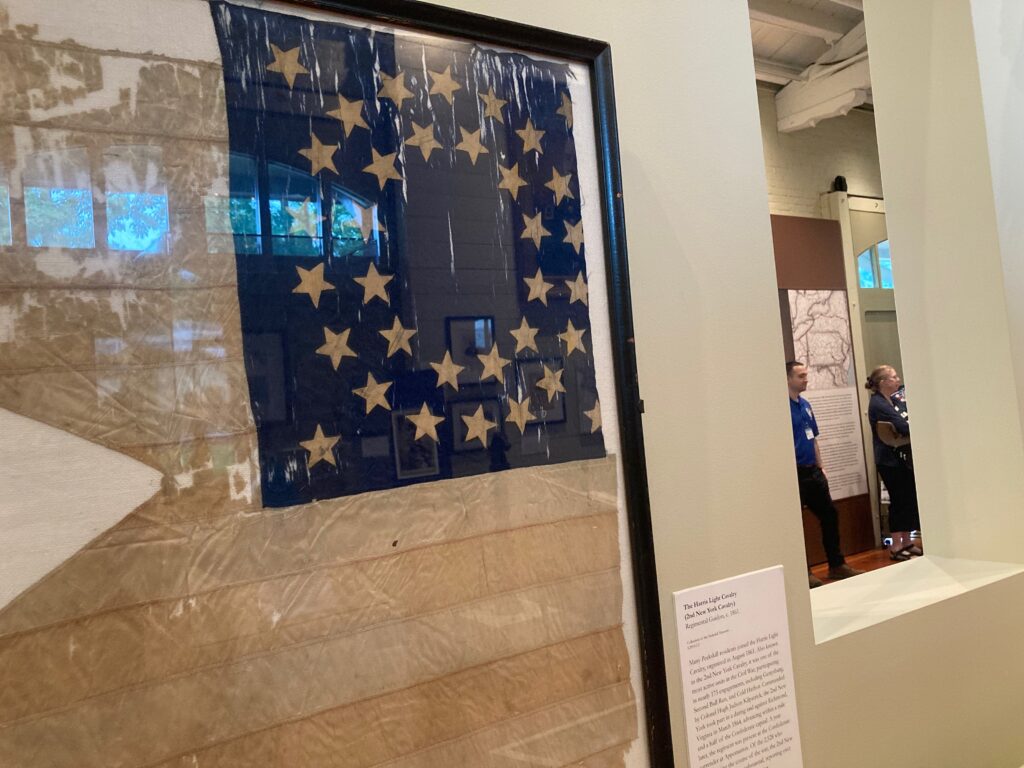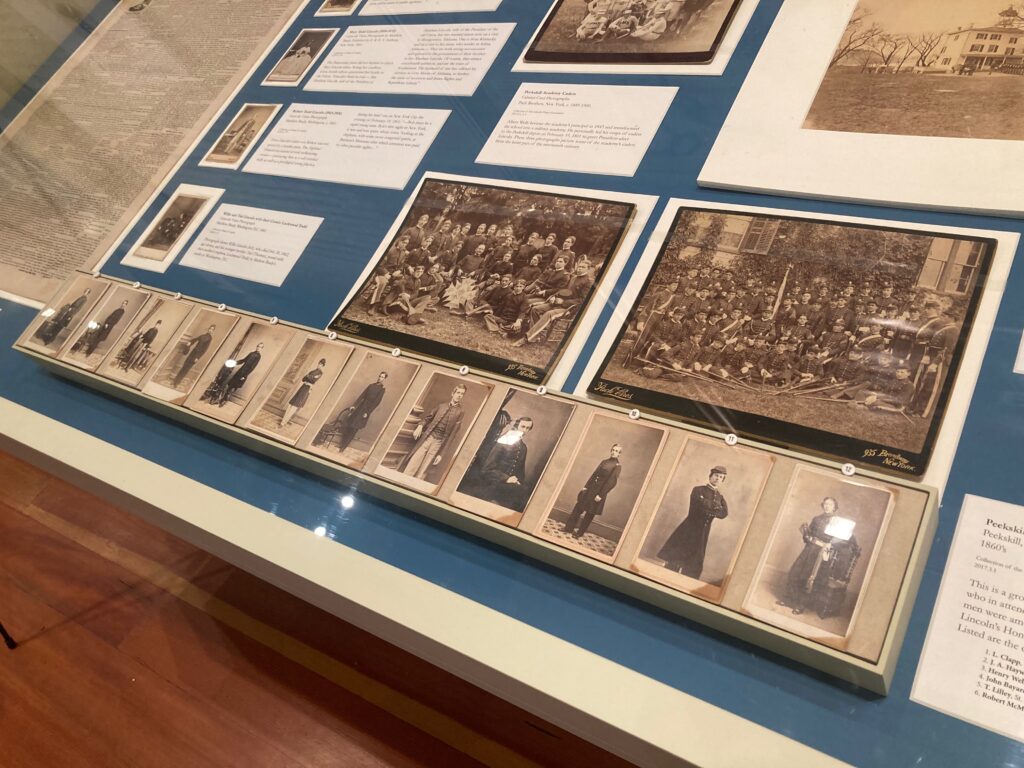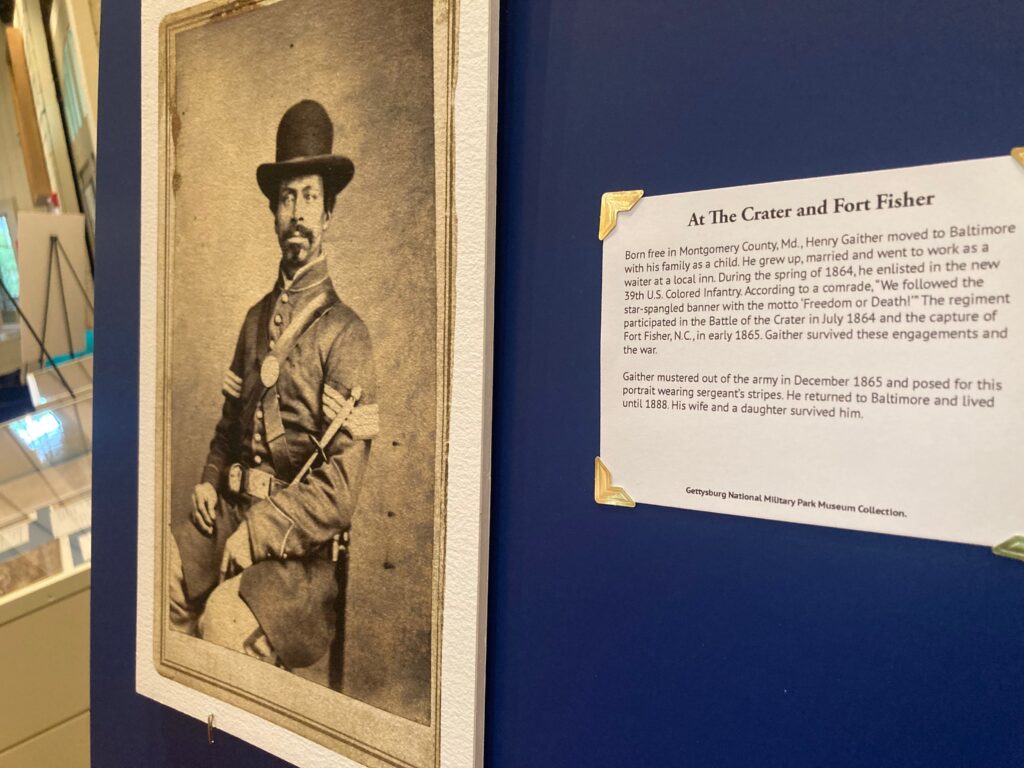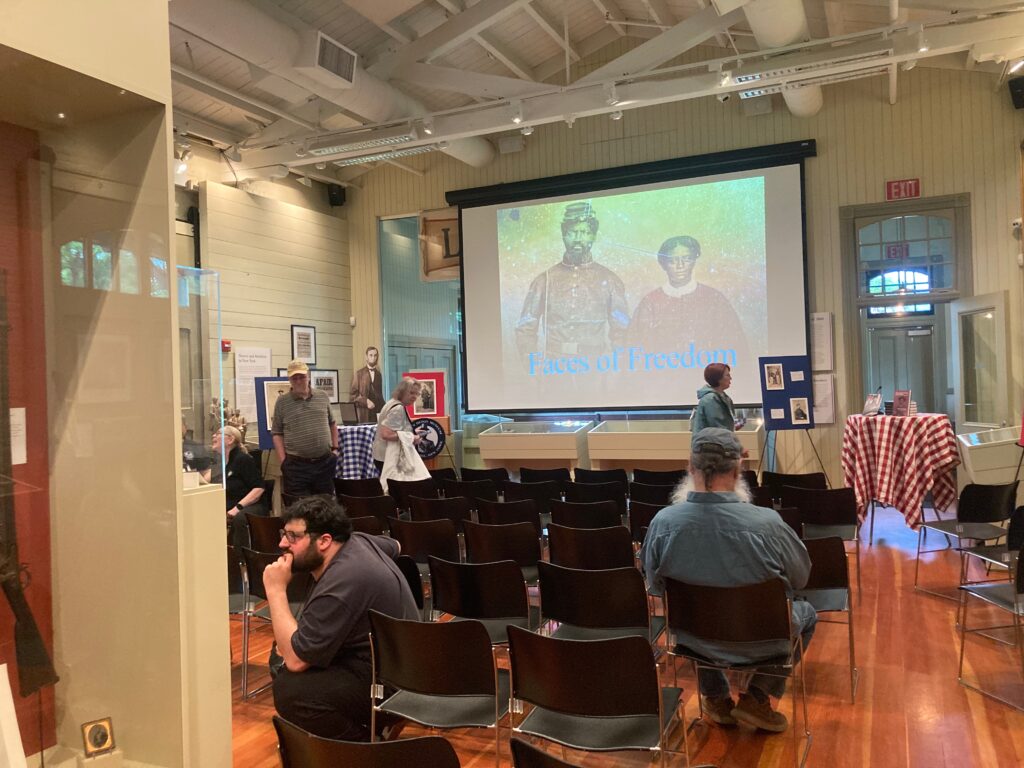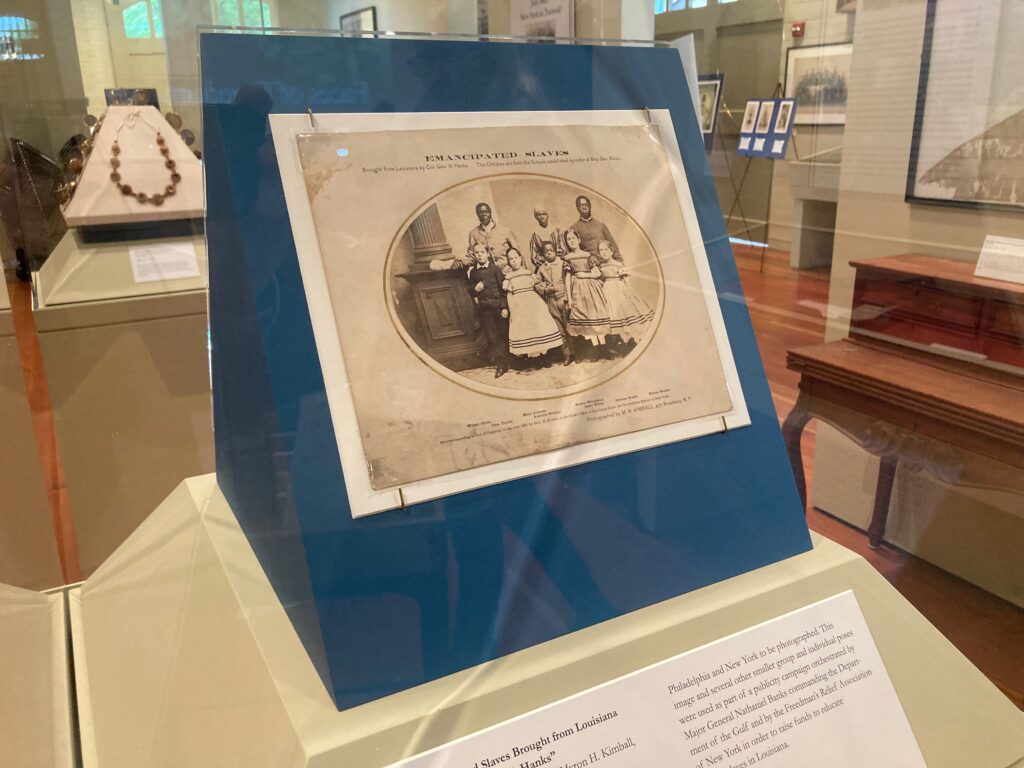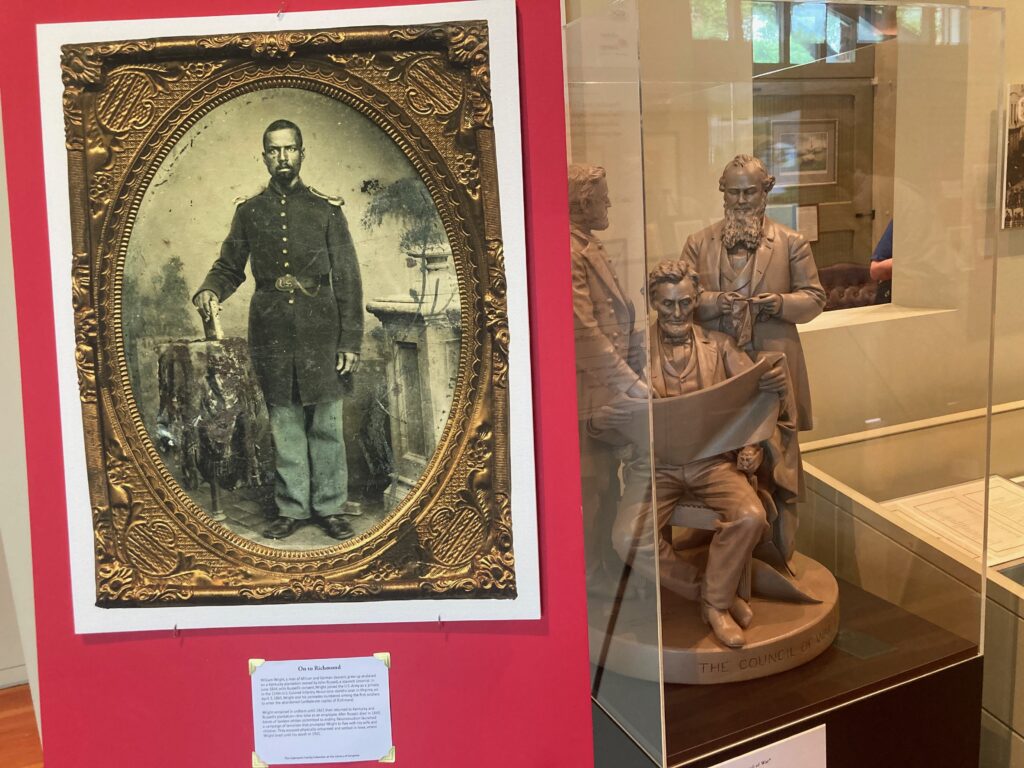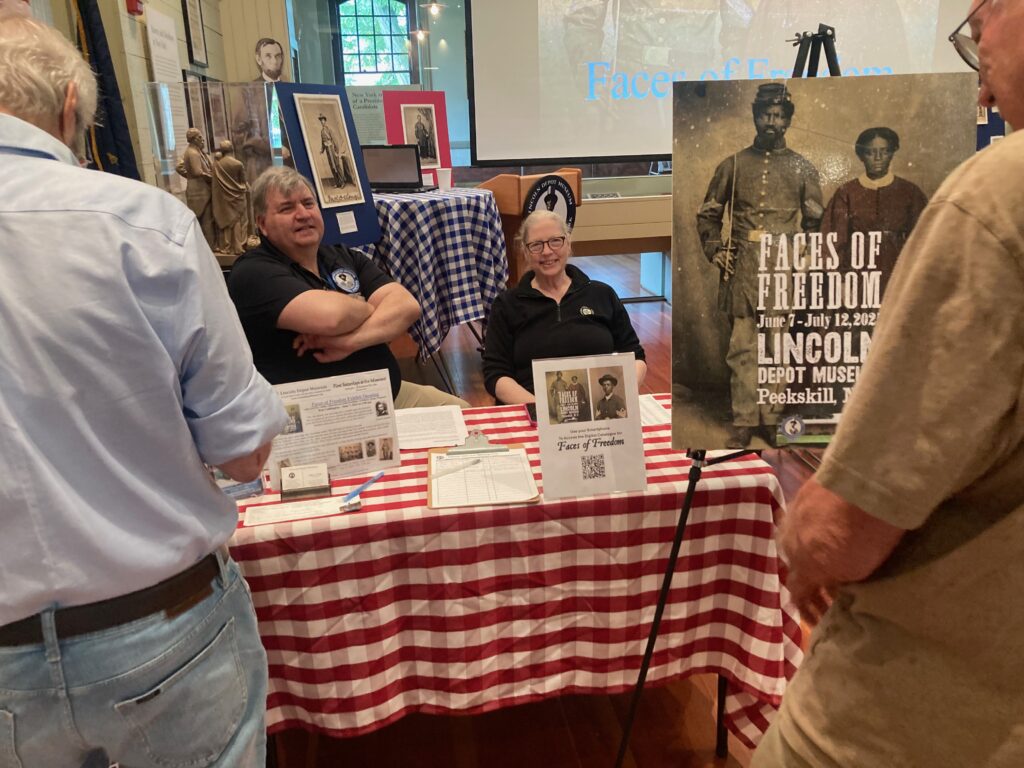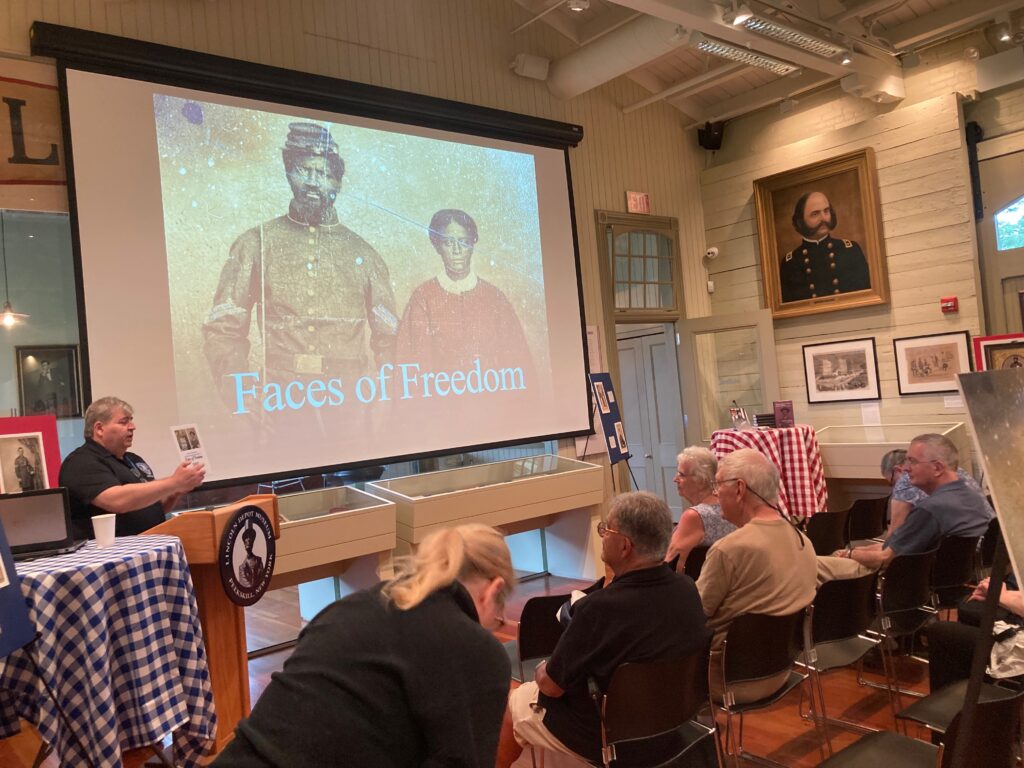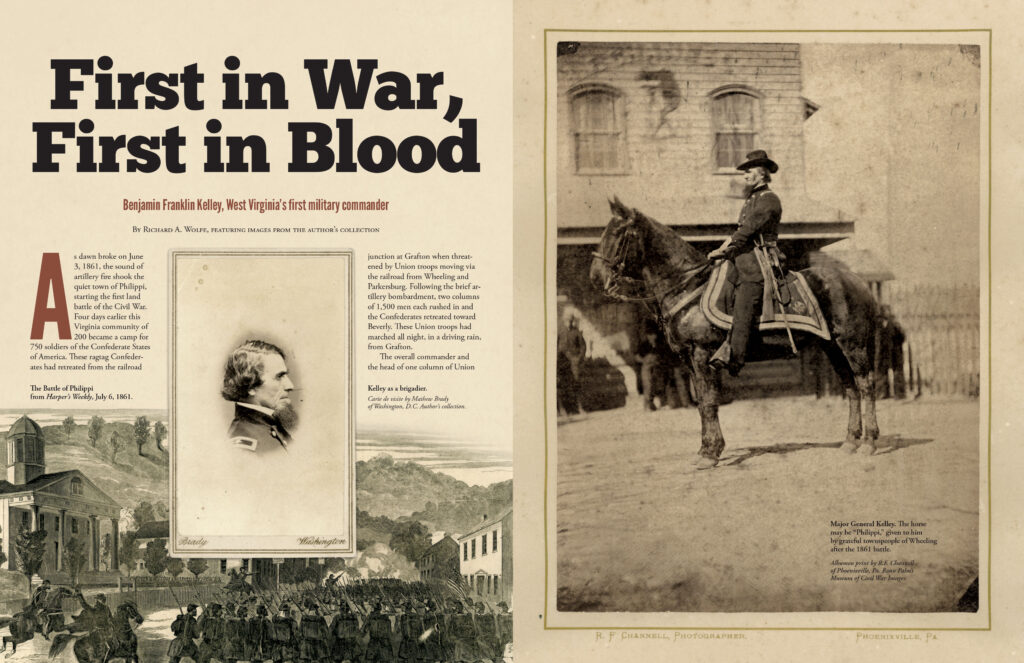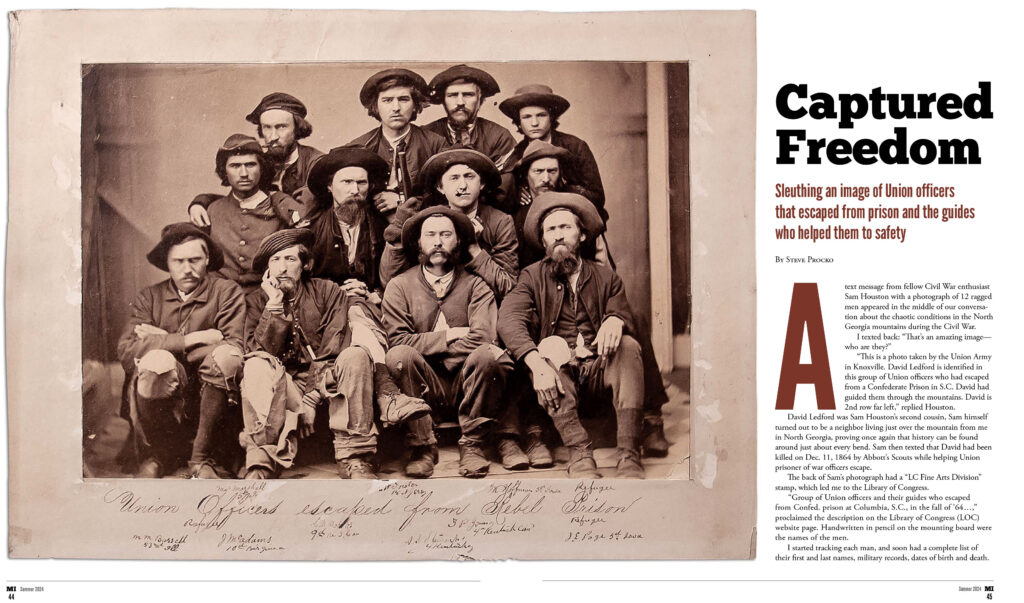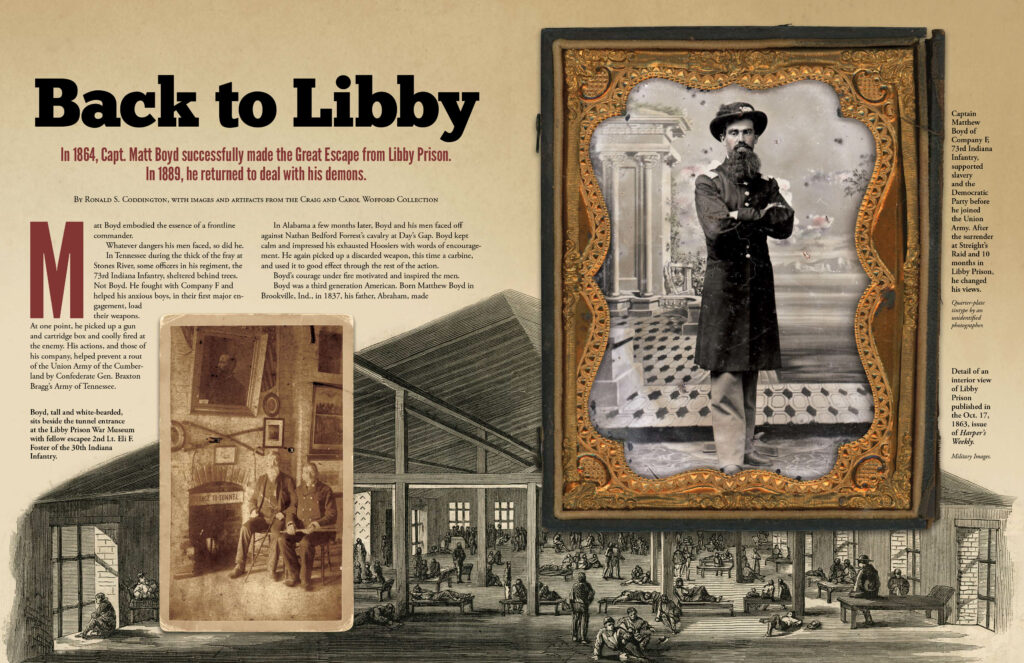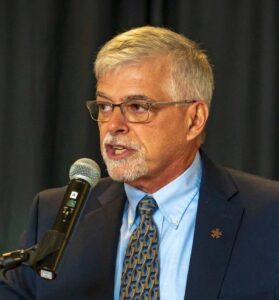A complete table of contents for the Autumn 2025 issue of Military Images magazine, and information about how to purchase single issues and subscriptions.
Vol. XLIII, No. 4
(80 pages)
Print edition: Visit our store to check availability
Digital edition: Visit JSTOR.org to purchase
Subscribe or renew your subscription
Explore the MI Archives:
Browse | Advanced search | Tutorial
Inside
Cover
An albumen print the Rick Carlile Collection pictures five members of Company F, 44th Massachusetts Infantry, posed with weapons and gear.
Table of Contents (p. 1)
Editor’s Desk (p. 2)
A reflection on generative AI that animates and colorizes 19th-century military photographs, situating it within photography’s history and public engagement.
Mail Call (pp. 3-4)
Feedback includes the identification of two military images: U.S. Navy sailor Isaac H. Pierman and Sgt. John S. Koster of he 35th and 21st Massachusetts infantries.
Military Anthropologist (p. 4)
Newspapers.com data shows how “Contraband,” “Fugitive Slave,” “Colored Troops,” and “Freedmen” rose and fell in U.S. newspapers during the Civil War, 1861–1865.
Passing in Review (p. 6)
Review of Timothy Renner’s I Have Never Minded the Loneliness, profiling 37 hermits—including Gettysburg’s Hermit of Wolf Hill—with ties to Strange Familiars.
Photo Sleuth by Kurt Luther (pp. 8-11)
How to use generative AI in Civil War photo sleuthing: reverse image search, facial recognition, backdrop matching, better prompts, bias checks, and cautions.
Antebellum Warriors by Ron Field (p. 12)
A South Carolina militiaman with palmetto-plumed shako, triple-breasted coat, leather stock, civilian trousers, and an 1807-pattern stirrup-hilted sword.
Most Hallowed Ground (p. 14)
Franklin Y. Commagere served with the 14th Ohio Infantry, 67th New York Infantry, and the 6th U.S. Colored Cavalry; later in the 7th U.S. Cavalry. He is buried at Arlington.
The Honored Few by Evan Phifer (p. 16)
At Gettysburg, John B. Fassett led the 39th New York Infantry to retake Watson’s Battery guns near the Trostle farm on July 2, 1863, earning the Medal of Honor.
The Citizenry by Elizabeth A. Topping (p. 18)
Nine women identified as nurses at York U.S. Army Hospital, c.1864; with ties to the Ladies’ Aid Society ties and care after the Battle of Gettysburg.
Of Arms and Men by Phil Spaugy (pp. 20-23)
Company B, 9th Pennsylvania Cavalry on Lookout Mountain with Starr carbines in 1864, soon to ride under Kilpatrick during Sherman’s March to the Sea.
“Our Mess”: An 1862 image captures the camaraderie, campaigns, and distinctive equipment of five pards in Company F of the 44th Massachusetts Infantry by Michael R. Cunningham, Ph.D., featuring an image from the Rick Carlile Collection(pp. 24-27)
Exploring an image of five soldiers of Company F, 44th Massachusetts Infantry, posed with Enfield rifles and Short’s Patent knapsacks.
Marching Order! A glimpse of what federal soldiers looked like as they marched into battle— and into history by Michael R. Cunningham, Ph.D., featuring images from the Rick Carlile Collection (pp. 28-37)
Portraits show soldiers ready for campaigning with field gear—knapsacks, canteens, bayonets—plus other gear, from all sections of the Union.
The Bayard of the Volunteer Army: The life and death of Brig. Gen. William Haines Lytle, the poet-warrior by Ronald S. Coddington (pp. 38-43)
William Haines Lytle, 10th Ohio commander and poet, received a gold Maltese cross in August 1863 and fell at Chickamauga weeks later; his verse shaped his legacy.
On Quinby’s Watch by Ronald S. Coddington (pp. 46-55)
Colorado Lt. Ira Quinby, a Signal Corps officer active at the 1864 Battle of Westport, helped guide moves that halted Price’s Raid—The Gettysburg of the West.
Mary’s Album: Cartes de visite and tintypes collected by a teenager put faces on two Loudoun Rangers of Virginia by Bob Iwig (pp. 58-60)
A Harpers Ferry teenager’s album includes photos of two Loudoun Rangers—Union cavalrymen active in an area with Mosby’s raiders and White’s Comanches.
Collecting Civil War Artifacts Before the Centennial by Norman Delaney(pp. 62-63)
Reflecting on how Civil War artifacts were found before the 1961–65 centennial, from family heirlooms to Bannerman catalogs, antique shops and early hunts.
Material Culture by Frederick C. Gaede and Paul D. Johnson (pp. 66-67)
Colonel William d’Alton Mann proposed shoulder-slung accouterments to move weight off the waist. Selected units tried the innovation, but never adopted it as standard.
Women of War by Melissa A. Wynn (pp. 68-69)
Louisa May Alcott served as a Civil War nurse in Washington, D.C., recorded her experiences in Hospital Sketches, and championed women’s rights.
Behind the Backdrop by Buck Zaidel (pp. 70-71)
A Hartford, Conn., studio’s camp-scene backdrop—attributed to Nelson A. Moore—shows up in similar form in Ohio and Philadelphia, tracing links among wartime studios.
Vignette by Scott Valentine (p. 72)
Samuel A. Duncan led the 4th and 6th USCT at New Market Heights in 1864 during the Richmond campaign; Sgt. Maj. Christian Fleetwood earned the Medal of Honor.
Stragglers (pp. 74-76)
Kentucky campaigners, a sailor of Asian heritage, a split-screen soldier on camp and on campaign, and a soldier at Point Lookout.
The Last Shot (p. 80)
Unidentified Confederate with Bowie knife, single-shot pistol, and tinware in a wool jacket—a ninth-plate ambrotype from the Paul Reeder Collection.



